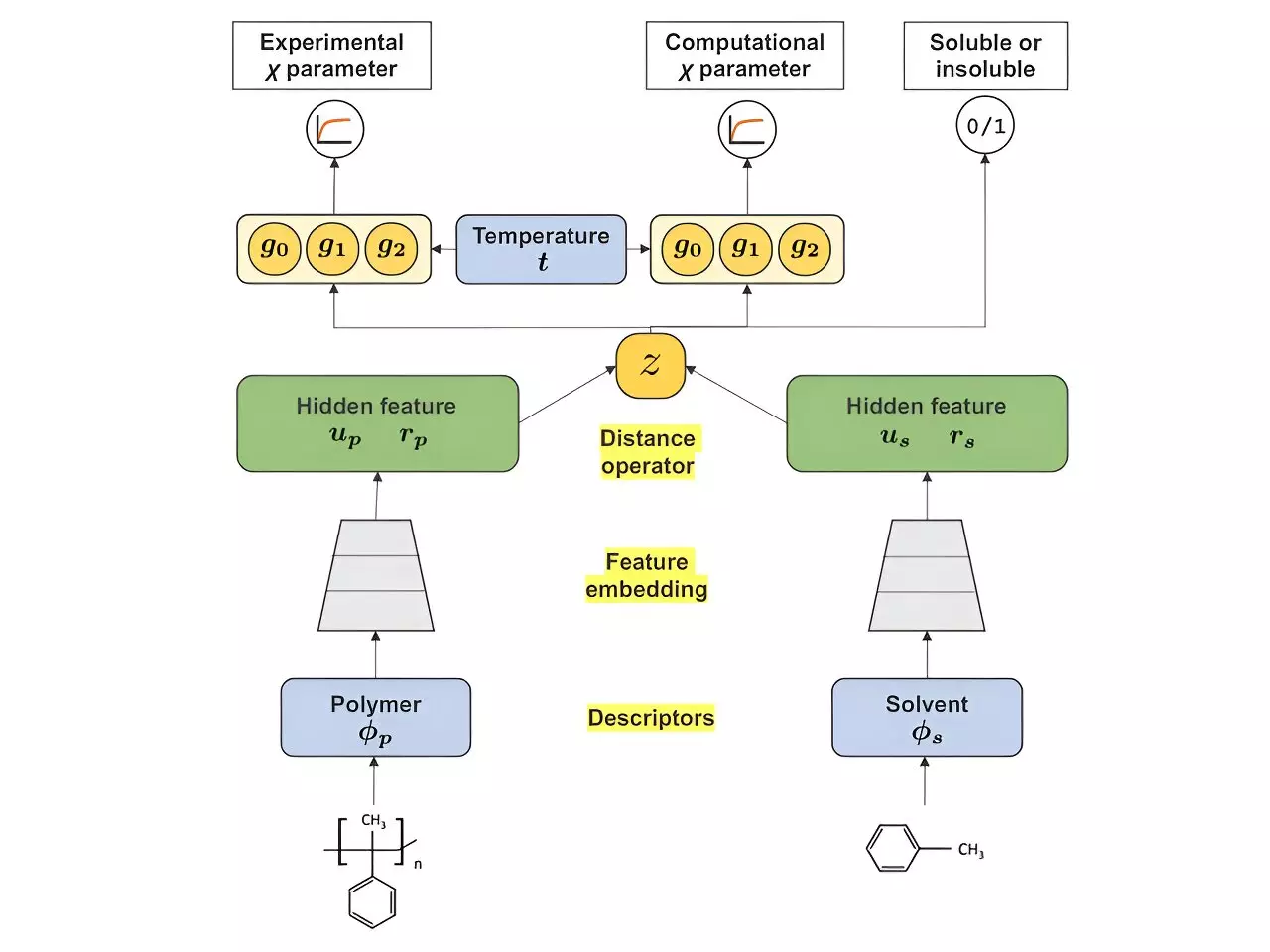In the pursuit of sustainable materials development and reducing our carbon footprint, the recycling of plastic waste plays a crucial role. Dissolving polymers with organic solvents is an essential process in various applications such as polymer synthesis, refining, painting, and coating. However, determining the miscibility of polymers with solvent candidates has always been a challenge due to limited experimental data. In order to overcome this limitation, scientists at Mitsubishi Chemical Group (MCG) have developed a groundbreaking machine learning system that can predict the miscibility of any polymer-solvent mixture with remarkable accuracy.
A Novel Approach: Integrating Quantum Chemistry Calculations and Data
By harnessing MCG’s databank of quantum chemistry calculations, researchers utilized massive data produced from high-throughput quantum chemistry experiments. The integration of these computer experiments with real experimental data created a powerful multitask learning model. This model overcomes the limitations of scarce experimental data and accurately predicts the miscibility of polymer-solvent systems. The researchers published their findings in the journal Macromolecules.
Potential Applications for Waste Plastics
The predictive model developed by the researchers enables the selection and design of solvent molecules for recycling plastic waste. This innovation allows for the selective separation of specific materials from mixed plastics, thus improving the recycling rates of waste plastics. Additionally, these solvent molecules, known as “miscibilizers,” can be used to create high-performance polymer blends. This advancement has the potential to significantly contribute to the development of decarbonized societies and the realization of a circular economy for plastics.
The efficiency and accuracy of the predictive model are notable advantages. The model can calculate chi (χ) parameters, which determine the miscibility of polymer-solvent mixtures, approximately 40 times faster than conventional quantum chemistry calculations. This remarkable speed enables the screening of millions of candidate solvent molecules in an ultra-high-speed manner. Moreover, the model eliminates much of the trial and error by accurately identifying the optimal conditions for creating a homogeneous mixture suitable for recycling.
While the predictive model shows great promise, there are still areas for improvement. The current model lacks the ability to determine the dependence of a polymer’s miscibility on factors such as molecular weight or compositional features. To address this, the researchers have made part of the source code and data publicly available. This open innovation approach aims to increase the model’s dataset and incorporate a wider range of information, ultimately leading to a more comprehensive representation of a polymer’s true miscibility. Harnessing crowd-sourced data in materials informatics can expedite the learning process and enhance the model’s capabilities.
The Future of Polymer-Solvent Miscibility Prediction
The ability to predict and understand polymer miscibility is a significant innovation that will shape future technologies in materials development. As society moves away from plastic-based materials, there is an urgent need for intelligent recycling of waste plastics. The machine learning system developed by MCG is a promising step towards optimizing the recycling process and achieving sustainable practices. By combining quantum chemistry calculations, real experimental data, and open innovation, researchers are revolutionizing the field of materials informatics. This interdisciplinary approach will pave the way for advancements in recycling technologies and contribute to the creation of a more environmentally friendly and resource-efficient society.
The integration of machine learning and quantum chemistry calculations offers an innovative solution to the challenges associated with predicting polymer-solvent miscibility. The predictive model developed by Mitsubishi Chemical Group demonstrates high accuracy and unparalleled speed in identifying solvent candidates for recycling plastic waste. Through open innovation and the continuous refinement of the model, the future looks promising for the efficient and sustainable recycling of plastic waste materials. With ongoing advancements in materials informatics, we can envision a future where waste plastics are transformed into valuable resources, reducing our reliance on virgin materials and promoting global sustainability.



Leave a Reply